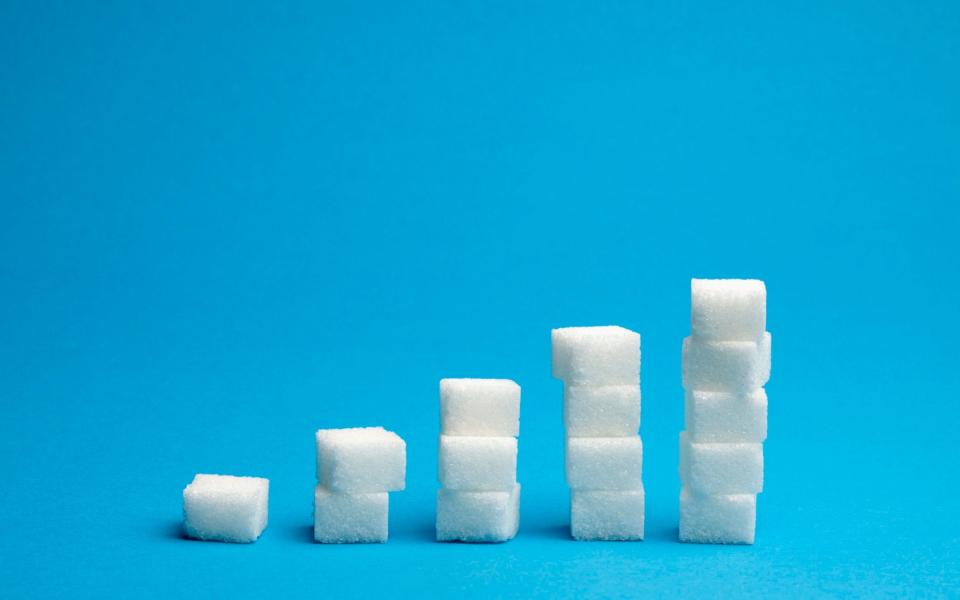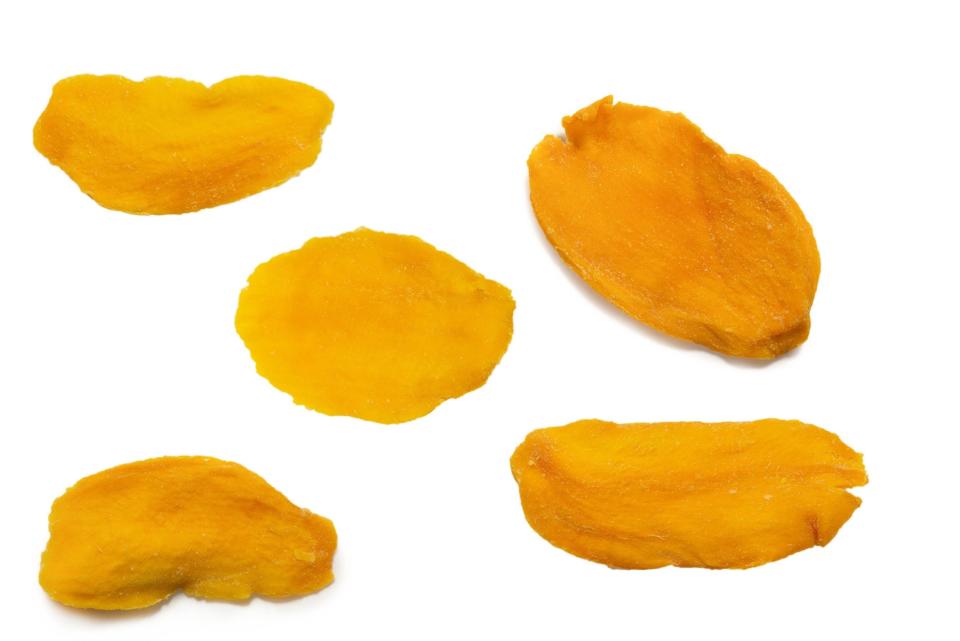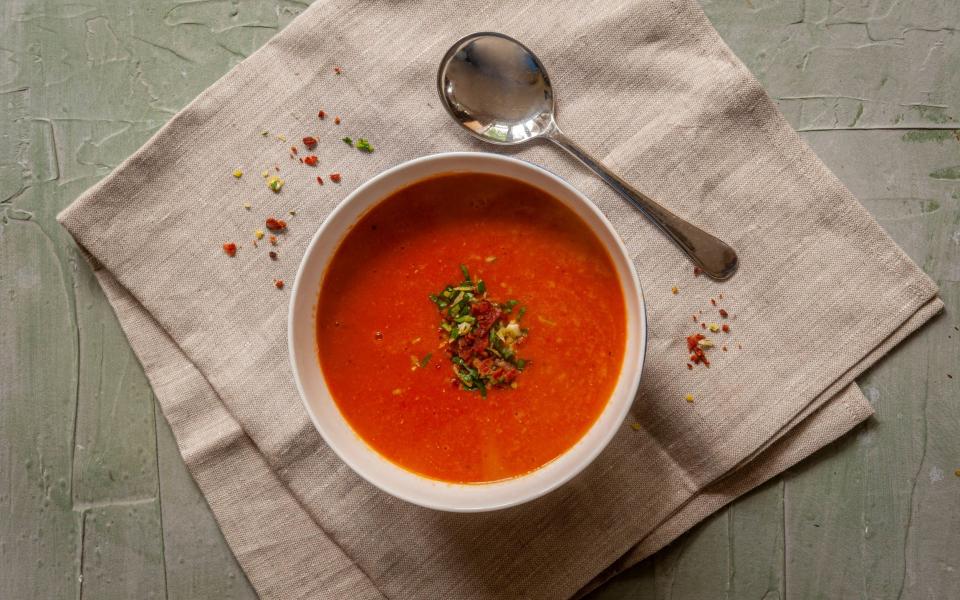This is how much sugar you should have in one day

A “sugary treat” usually means indulgence: a chocolate biscuit, or a sticky pastry loaded with custard. You’re right in thinking these contribute to your daily limit of “free sugars”, which, according to the NHS, is 30g. But if you think the smoothies you blend in your kitchen and the teaspoon of honey drizzled on your porridge don’t count, you’re fooling yourself.
“We often think that the sugar we need to watch only exists in high-sugar processed foods like chocolate and sweets,” says Dr Somi Igbene, a biomedical scientist. “But foods we categorise as being healthier – fruit, dairy, carbohydrates – still contain sugar and we can still eat too much of them,” she says.
Our bodies do need some sugar for energy. “We break down all carbohydrates into glucose, a type of sugar that fuels your brain, heart and nervous system,” Dr Igbene explains. “A diet that’s 40-60 per cent carbohydrates is sufficient – preferably in the form of whole foods that slowly release energy like whole grains, starchy vegetables, fruit, beans and lentils. Most of us don’t need any more sugar than that.”

A diet that’s high in sugar can cause weight gain, and being overweight increases our risk of conditions such as Type 2 diabetes, cardiovascular disease and even some cancers.
Not all sugar is created equal, however. Health experts talk about “free sugars” – sugars that are not inside the cells of the food that we eat – and “intrinsic sugars”, which are. “Free sugars cause spikes in blood sugar – and, hard as it might be, these are the ones we need to cut back on,” says Dr Igbene.
Even the most virtuous eaters among us are getting more sugar than we need. Here’s what to look out for:
Don’t take the biscuit
A 2016 study by Queen Mary University of London, published by the BMJ, found that on average 97 per cent of cakes and 74 per cent of biscuits sold in the UK contain more than 22.5g of sugar per 100g. So one biscuit takes you very close to your NHS recommended 30g a day limit.
You can still enjoy a biscuit or cake when the afternoon slump hits but there are ways to do so as part of a balanced diet. “Think about reducing your portion size and the frequency of sweet treats rather than cutting them out altogether,” says Lucy Jessop a food writer and registered associate nutritionist. “Start by choosing a smaller chocolate bar, then perhaps cut back to once every other day – it’s a more sustainable approach longer-term.”

Read the label, and don’t be fooled by misleading claims on packaging such as “low fat” or “high protein” or “contains natural sugars”, because unfortunately marketing messaging isn’t strictly regulated and these claims can lull you into thinking that you’re making a healthy choice.
Red labels suggest products should be eaten in small portions and only occasionally, rather than every day. “Healthier” cakes containing vegetables and oats may contain fibre, but the sugars are still there, even if fibre slows down the absorption of sugar and provides a steadier release of energy.”
The whole fruit and nothing but
If filling up the fruit bowl is your answer to cutting back on sugar, tread carefully. Fruit is certainly preferable to snacking on a chocolate bar – but maybe not as much as you think.
Fruit sugar, known as fructose, doesn’t count as “free sugar” when it’s contained as a whole fruit – but you still want to be mindful of how much you’re eating.
“If you’re aiming to eat five-a-day, try and make three of them vegetables, and only two fruit,” says Dr Igbene. “You can get vitamin C from eating vegetables like broccoli and peppers and it’ll reduce the amount of sugar you’re eating.”
Aim for 15g of carbohydrate per fruit, found in one small apple, orange or pear, half a banana or 15 grapes. This hits the ideal fibre to fructose ratio that’ll slow down digestion and keep your sugar levels steady.
Smoothies are second best, but avoid juice
The simple act of blending an apple into a smoothie turns it from a whole fruit to a free sugar. “When you eat the whole food, you’re also getting the fibre, which helps slow down the release of the sugar,” says Dr Igbene. “Smoothies are slightly better than juices because there’s still some fibre in there.”
Without the fibre in fruit, sugar enters our bloodstream quickly. “When there’s a sharp burst of glucose in our bloodstream, it causes insulin to rush to mop up the extra glucose that we’re not using for energy,” Dr Igbene explains. “Over time, this response can lead to insulin resistance and possibly Type 2 diabetes.”
Aim to base your smoothie on vegetables rather than fruit, and add healthy fats like avocado and plain yoghurt.
And what about the one of your five-a-day glass of orange juice? “Juice does contain beneficial amounts of vitamin C but because it’s processed, it contains free sugars,” says Jessop. “So it’s best to stick to a small 150ml glass and see it as an occasional rather than everyday choice.”
What about dried fruit?
Dried fruit might seem like a healthy snack but stick to 30g – your daily allowance. This equates to one heaped tablespoon of raisins, one handful of dried banana slices or six pieces of Pret’s dried mango snack.

“Drying removes the water from the fruit, which means you can eat larger portions with more sugar, resulting in sugar spikes that you want to avoid,” says Dr Igbene.
Artificial sweeteners? The jury’s still out
Despite about 2.2 million people in Britain using artificial sweeteners four times a day or more, the World Health Organisation has released new guidance suggesting that we should find other ways to reduce sugar intake (those with diabetes should stick with artificial sweeteners).
This comes following a review that suggests the long-term use of sweeteners may lead to health problems such as Type 2 diabetes and heart disease. “The jury’s still out on sweeteners,” says Jessop. “The benefit of using them really depends on the individual, but in the short term, they might have a positive impact on weight loss.
The honey trap
They may be naturally occurring, but maple syrup, molasses, honey and agave syrup are still free sugars that need to be limited – in fact they are no healthier for you than granulated sugar. “Some think maple syrup and honey taste sweeter so you can get the sweetness you’re after by using less,” says Dr Igbene. “There’s little health benefit to using these as an alternative to a spoonful of sugar and they’re often more expensive,”
Soups to watch
Shop-bought soup hides a lot of sugar. Half a tin of Heinz Tomato Soup contains 9.7g while Covent Garden’s Tomato & Basil Soup contains as much as 12.2g per 300ml serving – almost half your daily allowance.
“The more heavily processed a food, the more likely it is to contain free sugar,” explains Jessop. If you have your heart set on the soup of the day, check the labels – opting for the green or amber ones.

“You could also choose a soup with added grains such as pearl barley, which increases the fibre content – opt for soups with more than 3g of fibre per 100g.
“When reheating, add a handful each of frozen peas, sweetcorn or spinach, this way you’re increasing your veg and fibre intake.”
Count your tipples
With approximately 0.8g of sugar in a medium-sized glass of red wine and 1g of sugar in a glass of prosecco, the danger with alcohol is that many of us forget that what we drink contributes to our sugar intake. Alcoholic drinks are responsible for more than nine per cent of the “free sugar” consumed by people aged between 18 and 74 in the UK due to the sugar content in mixers and fruit juices that are added to spirits and cocktails.
“Alcohol itself doesn’t contain sugar but alcoholic beverages tend to contain added sugars that can raise blood sugar,” explains Dr Igbene. “Beer also contains carbohydrates that can raise blood sugar.” So is there an alcoholic drink that’s better than others when it comes to sugar content? “It’s best to choose low-sugar or low-carb drinks such as distilled spirits, dry wines and low-sugar or sugar-free mixers for spirits.”
Go for whole grain cereals
Even the healthier looking cereals on the supermarket shelf contain added sugar. A bowl of cornflakes contains 10g of sugar per 100g while a 45g bowl of Alpen contains 9.5g. “Choosing a whole grain cereal that contains fibre will help slow the digestion of the food but you still need to count the added sugar,” says Dr Igbene.
Jessop’s advice is to choose cereals with no added sugar that are high in fibre. “Go for whole grain cereals like shredded wheat or porridge oats,” she says. “Adding your own toppings like fresh or frozen berries means you can better control your sugar intake.”

 Yahoo Sports
Yahoo Sports 